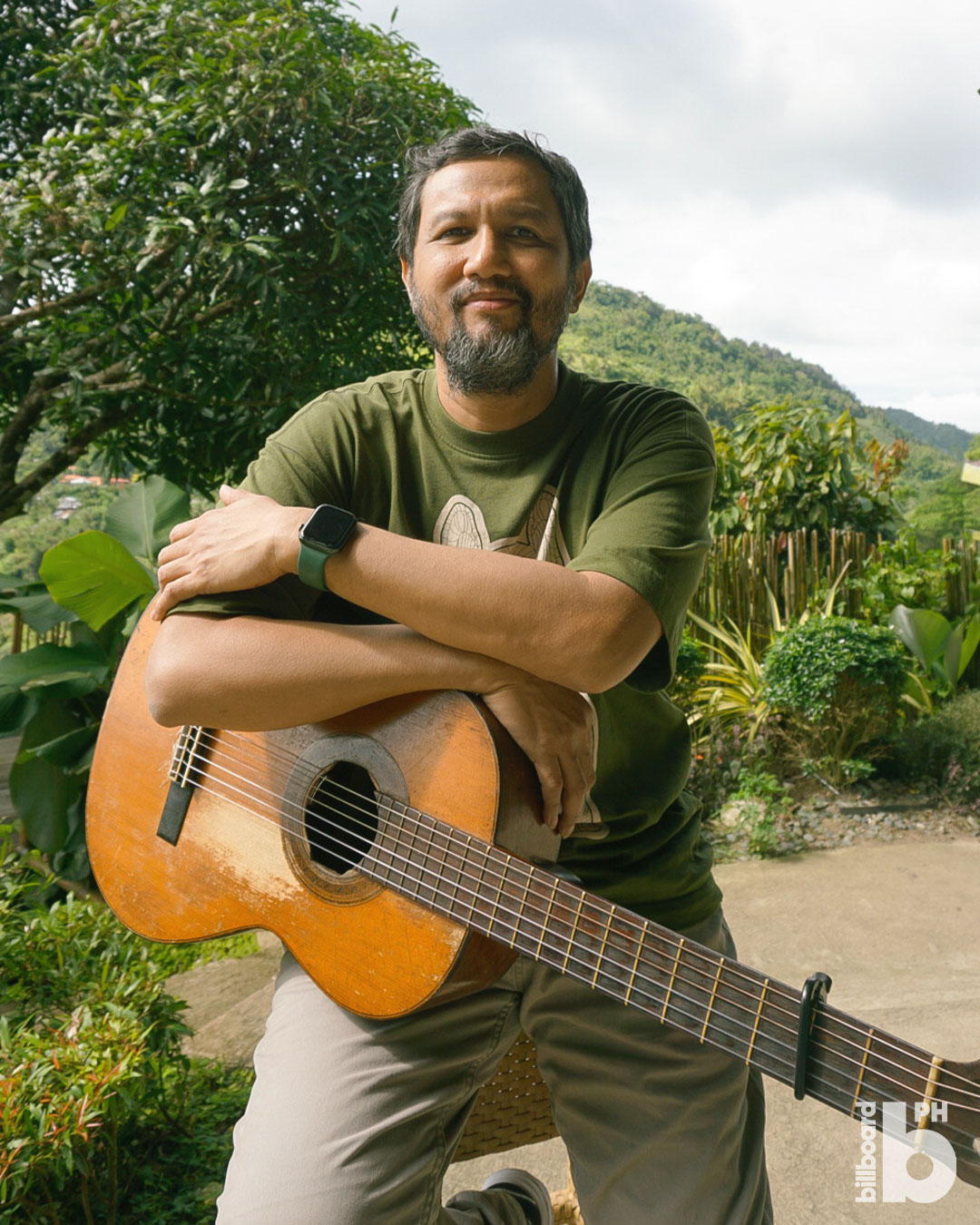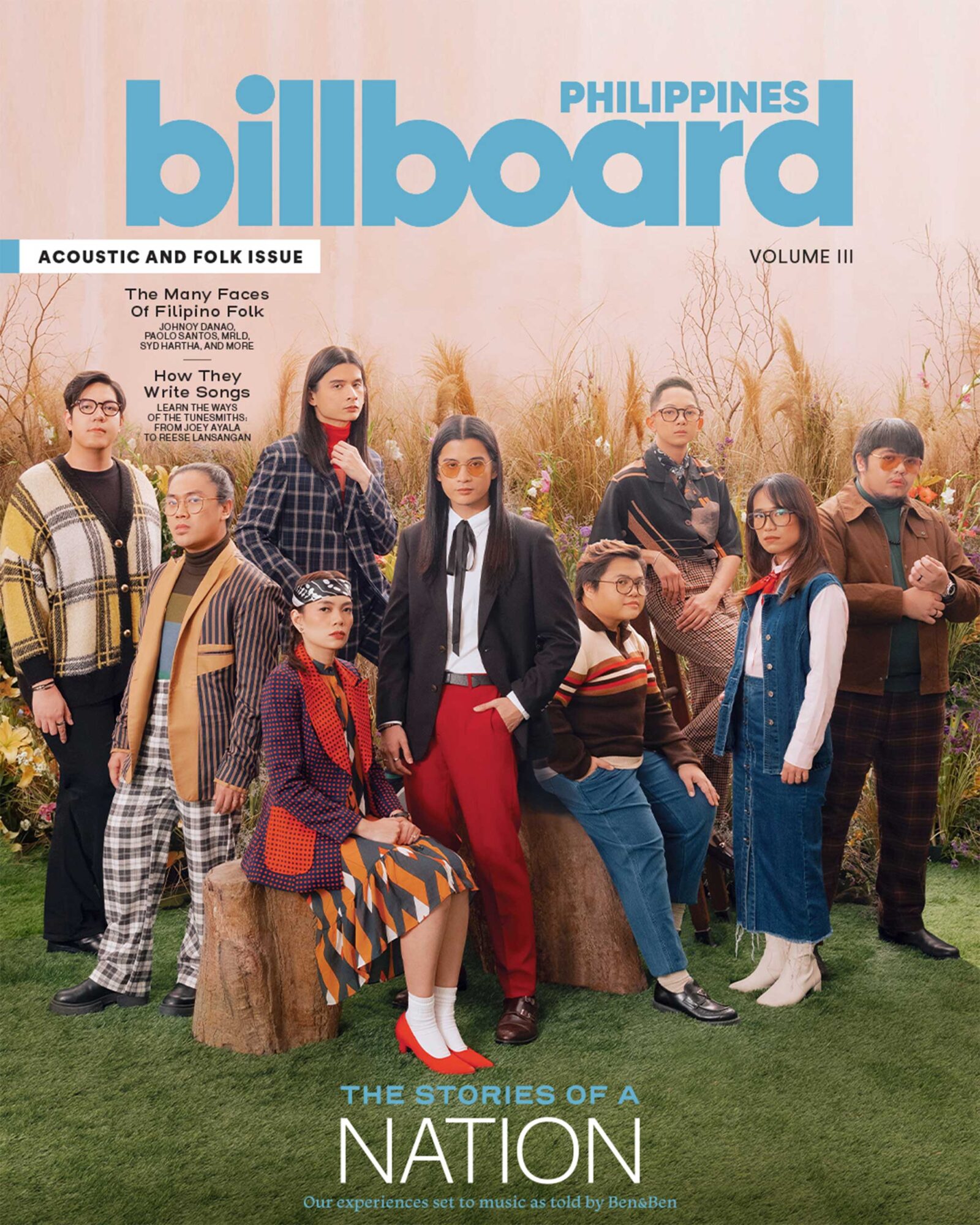Johnoy Danao On His Songwriting Journey: “Songs Really Help People Cope With Life”
The ‘Ikaw At Ako’ singer may not be a household name, but his songs have accompanied many Filipinos’ poignant moments.

Johnoy Danao photographed by Kara Angan for Billboard Philippines, December 2023.
Johnoy Danao photographed by Kara Angan for Billboard Philippines, December 2023.
The casual Filipino music fan may not recognize Johnoy Danao right away, but it’s highly likely that you’ve heard at least one of his songs more than once — at more than a few weddings you’ve attended, or as the soundtrack of a same-day edit video that your newlywed friends posted on social media.
Indeed, Danao’s “Ikaw At Ako” (You And Me) has become a popular matrimonial song of choice among Filipinos over the last decade. It has scored countless prenup videos and marches down the aisle, a fact that has since become known to the singer-songwriter. “Ngayon lang siya nagiging apparent kasi ‘yung mga videos, pino-post nila sa Facebook; dati hindi naman”(It’s only now that it’s becoming apparent because people are posting their wedding videos on Facebook), he says. “Pero dati pa pala nila ginagamit; meron na lang lalapit [and would tell me], ‘Alam mo, theme song namin ‘yung kanta mo.’” (As it turns out, people have been using the song for a long time. Some would approach me and say, “Your song is our theme song.”)
“That song is 12 years old,” he adds. “[It’s] heartwarming kasi ang tagal na ng kanta, pero ngayon lang siya na-connect sa akin. Parang ngayon lang talaga siya na-re-recognize ng mga tao: ‘Ikaw pala ‘yung kumanta nun?’” (It’s heartwarming because it’s an old song, but it’s only now that people are recognizing it as one of mine: “Wow, you sang that?”)

Johnoy Danao photographed by Kara Angan for Billboard Philippines, December 2023.
Danao has long accepted the fact that he never became a household name of sorts, even if he started performing music at around the same time that the likes of Paolo Santos and Nyoy Volante began serenading audiences with their acoustic covers. He released two albums with the band Bridge before going solo, an indication that he was a songwriter first and foremost. “I was on the path na original songs ko talaga ‘yung gusto kong i-push” (I was on the path of wanting to push my original songs), he shares. “It was difficult at first, pero parang slow burn ‘yung nangyari sa career ko; hindi siya instant gratification.” (It was difficult at first, but my career has really been a slow burn instead of being instantly gratifying.)
This is why he never felt he was part of that early 2000s acoustic wave to begin with. “Iba ‘yung listeners nila from mine. (Their listeners are different from mine.) Hindi ko naramdaman na (I didn’t feel like) I was part of a wave; I was just doing my own thing,” he elaborates. “Maybe because I was really pushing for my original songs na hindi rin kaagad na-appreciate ng mga tao (that weren’t immediately appreciated). Hindi sya mabilsan — hindi katulad ni Paolo Santos nung nilabas niya ‘yung cover niya ng ‘Moonlight Over Paris’ na parang, boom.” (It wasn’t immediate, unlike when Paolo Santos released his cover of “Moonlight Over Paris” and it just exploded.)
He did, however, have a successful stint playing a mix of originals and covers live with ace guitarist Kakoy Legaspi in the mid-’00s as Johnoy & Kakoy. The pair performed regularly at both Route 196 and The ‘70s Bistro, doing renditions of favorites by Dave Matthews, Pink Floyd, Coldplay, Pearl Jam, and more, but owning them with Danao’s trademark croon and Kakoy’s extended guitar excursions. “Kung anu-ano lang talaga na maisip namin na ma-e-enjoy ng tao, na gusto nilang pakinggan (We just thought of songs that people would enjoy and like to hear) in our own style, with Kakoy’s five-minute solos.”

Johnoy Danao photographed by Kara Angan for Billboard Philippines, December 2023.
Nowadays, Danao is a busy troubadour, having released three studio albums plus a number of singles and EPs prior to last year’s Johnoy Danao Live, a collection of live, stripped-down recordings from various shows and venues. It’s at gigs where he truly shines, and he’s a firm believer in the power of his voice and a lone acoustic guitar, because it’s how all of his songs originate. “Pag sumusulat ako ng kanta, acoustic guitar lang ‘tsaka boses” (I write songs with just an acoustic guitar and my voice), he tells us at a recent Cebu stop of his then-ongoing nationwide cafe tour, where he has been performing his songs solo. “It’s the most original form of the song for me. And for this cafe tour, pine-present ko ‘yung (I’m presenting the) original form of the song.”
“Andaming personal stories na ikinuwento ng mga tao sa akin after the show — ‘Ikaw ‘yung kasama ko nung nagkaroon ako ng breakdown’” (I’ve heard a lot of personal stories from people after the show — “You were with me during my breakdown”), he continues. “Ganun ‘yung pagsabi nila: ikaw ‘yung kasama namin. Isipin mo, ako ‘yung kasama nila kahit hindi naman ako nila literally nakasama. It’s heartwarming, ‘yung mga stories dito sa cafe tour na ‘to. Kaya balak ko pa siyang ituloy next year.” (That’s how they said it: you were with us. I was with them even if I wasn’t literally with them. The stories I’ve heard during this cafe tour are heartwarming, and that’s why I plan to continue it next year.)
It’s because of this that Danao considers it his mission — like his hero Gary Granada and other folk luminaries before him — to keep writing and singing songs about life. “Andami palang kwentong ganun (I realized that there are many stories like that), [that] songs really help people cope with life,” he closes. “Kaya patuloy akong magsusulat ng kanta hangga’t kaya ko, kasi malay ko ba kung kailanganin ng tao ‘tong kantang ‘to one day to survive this life. (That’s why I’ll keep writing songs while I can, because who knows when someone needs to hear them one day to survive this life.) Mahirap ang buhay — minsan malungkot, minsan masaya. (Life is hard — sometimes it’s sad, sometimes it’s happy.) Why not write a song about it?”
A version of this story appeared on Billboard Philippines’ Acoustic and Folk Issue, dated February 15.
